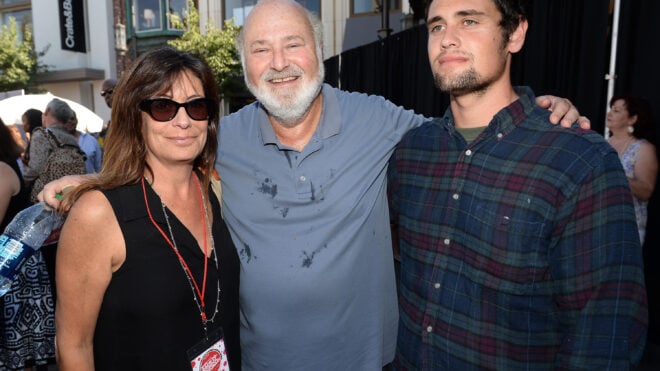

Here are a few truths about me: I am really into being environmentally conscious when it comes to as many decisions as possible. I love shopping. I love changing my style a little bit with each season, and I prefer to wear copious amounts of black as often as I can, but in all kinds of styles. I abhor fast fashion and try to avoid buying it as much as I can … unless it's been previously owned. Friends, I am a secondhand shopper for nearly everything, and I love it.
I can't pinpoint an exact moment where I realized that I had a secondhand shopping "problem," but it's worth mentioning that I spent a sizable portion of my childhood (at least two weekends a month) in flea markets. My parents had a booth in several flea markets in our region, and they usually took the four of us kids along with them while they worked. We were expected to help out in the morning, but we usually had a lot of time to run around and get into whatever we wanted throughout the day.
That usually meant playing outside, grabbing ice cream and reading a book, or just kind of milling around. But I have no doubt that somewhere in my brain, those flea market experiences have contributed to my current reality. Because not only do I love secondhand shopping, I thrive on it. I like it when it's a game, like when I decide I'm not spending more than $8 for a shirt on eBay and I have to wait and see if someone else is going to try to top it. I like when it's a hunt, like two summers ago when I was convinced we could find a beautiful, wooden, antique round kitchen table for under $250 (and we finally did). I also like it when I'm just kind of bored and looking around on Etsy to see what I can find for under $25. It's all fun!
But the hows and the whys of my interest in secondhand shopping have evolved over the years. It wasn't always a game, and at times it's been the best and nearly only way to keep everyone in my home clothed and happy. It's worth noting that there are some items I never buy previously owned (underwear and shoes, mostly), but that's because of my own hang-ups.
1. Pick a budget and stick to it.
I think when you're secondhand-shopping, it's super important to have a dollar amount in mind before you dive in. When I'm shopping online, this is pretty easy, since websites like eBay and Etsy give you the option to plug in a maximum amount you're willing to spend. I tend to go no higher than $15 on eBay unless I'm looking for something specific that's hard to find, and I generally keep it under $30 on Etsy (I'm a sucker for vintage dresses).
However, this is a lot harder for me when I'm shopping at secondhand stores in person. Some stores, like straight-up thrift stores such as Goodwill, aren't a budget challenge. But sometimes, especially when I'm traveling and at a place I probably won't return to, I can lose total perspective on how much money I'm spending. The more specialized a shop is, the harder it can be to remember what my budget is — that is, until I'm in the dressing room, staring down a huge swath of clothing and having to make hard choices.
2. Try lots of different shops and places.
I think a lot of people assume a few things about secondhand shopping:
- That it always means thrift stores.
- That it always means clothing in bad condition.
- That the clothes are somehow gross because they’ve been previously owned.
Let me tell you this: None of this is true! Right now, I’m rotating between two or three local thrift stores, eBay, Etsy, and a few shops on Instagram that sell secondhand clothing. One of my favorites is Western Wicker, but I only shop there when I have extra funds because it can get pricey (but it’s always worth it).
Western Wicker is a great example of the variety of stuff you can find while shopping secondhand. Sometimes it's ironic T-shirts, which are cool! And other times it's an amazing vintage red blouse that you can't live without.
Also PS: You can buy BOOKS secondhand all over the place! I have a favorite local shop, but I also will choose used books on Amazon every time it's an option. You do sometimes have to wait a few extra days for the book to arrive.
3. Decide what your goals are.
I am a goal-oriented person, so I love any excuse to get serious and figure out what I really want out of a situation. When it comes to secondhand shopping, I have mostly trained myself to go into it knowing who I'm looking for. Because honestly, unless I remind myself that I need to get my 10-year-old new pants and a hoodie, odds are I will be over in ladies wear all day long because I can't help myself. But if I go into it knowing that I am actually on a mission to get stuff for my kid, that's what I'll do. Usually.
4. Remember you aren't restricted to just clothing.
I mentioned earlier that we bought our kitchen table secondhand, and guys, I really do love it. Happily, that isn't the only item we've purchased that's been previously owned. Right now, our home is about a 50/50 split between stuff we bought brand new and stuff we bought secondhand.
Finding previously owned furniture that's actually in decent shape can be a challenge, though. I like to use Facebook Marketplace, but I have some rules: When I can, I ask if we can meet in public. I also never pay anyone until I have the item, and I really prefer to not have to go into someone's home when I'm picking up an item, especially when I'm alone. Generally, people are cool with these requests.
I also like our local Habitat Restore shop for furniture, but you have to be quick! A lot of the good stuff is snatched up as soon as it arrives. If you live in a decent-sized town or city, you'll also probably soon figure out that at least one or two of your local thrift stores can be relied on to have decent furniture and decor. I have a favorite for clothing and a favorite for furniture, and I'm even lucky enough to have a third favorite that is usually good for both.
5. Read reviews.
This is easier when you're shopping online, but it's still something you can accomplish when you're going in person, too: Make sure you're reading up on the shops you're visiting. When I'm shopping online, this is the best way for me to figure out if I'm going to get something with a quality level that I expect based on the photos, or if someone is really good at taking great photos of clothing that is actually riddled with tiny holes.
Other shoppers are usually great about leaving feedback that gives you an idea of what you can expect. In turn, I try to remember to go back and add my own feedback, too — but I don't always manage it.
6. Remember that it's not a race.
I am the type of person who used to be super stressed out by shopping and would avoid it as much as possible, but somehow, shopping secondhand has become one of the more relaxing things that I do. This is true even when I don't find anything at all that I want (which is often). There's no pressure to come away with an item just because everything is less expensive than it would be new, and there's also just no pressure at all. I often visit thrift stores and antique shops while I'm waiting to pick up my kid from an activity, or when I'm having a lazy weekend day.
7. Use this as an opportunity to examine yourself.
One thing I love about secondhand shopping is that it gives me more opportunities to try new styles and trends in a less risky way. I don't want to go to a shopping center and spend two hours in a fitting room to see if something works. I don't even enjoy going to Target! But I do like looking at worldwide clothing trends online, seeing what I think I might be into, and then searching for local items that kind of fit the bill. If it looks ridiculous, I don't pursue it, but I've also landed on some pretty fun style choices just because I paid only $5 for something and thought it was worth a shot.





